Abstract
This study examined the relationship between performance on the Assessment of Basic Learning Abilities test (ABLA), two auditory matching tasks, and a test of echoics, tacts, and mands with persons with developmental disabilities. It was found that discrimination skill (visual, auditory—visual, and auditory—auditory discriminations) was a better predictor of performance on verbal operant assessments than level of functioning based on diagnosis. The results showed high test—retest reliability for the test of verbal operants and no hierarchical relationship was found among the three verbal operants. The results suggest that the ABLA Level 6 might be a possible bridging task for teaching echoics, tacts, and mands. Further research is needed to ascertain the relation between the auditory matching tasks and the verbal operants.
Full text
PDF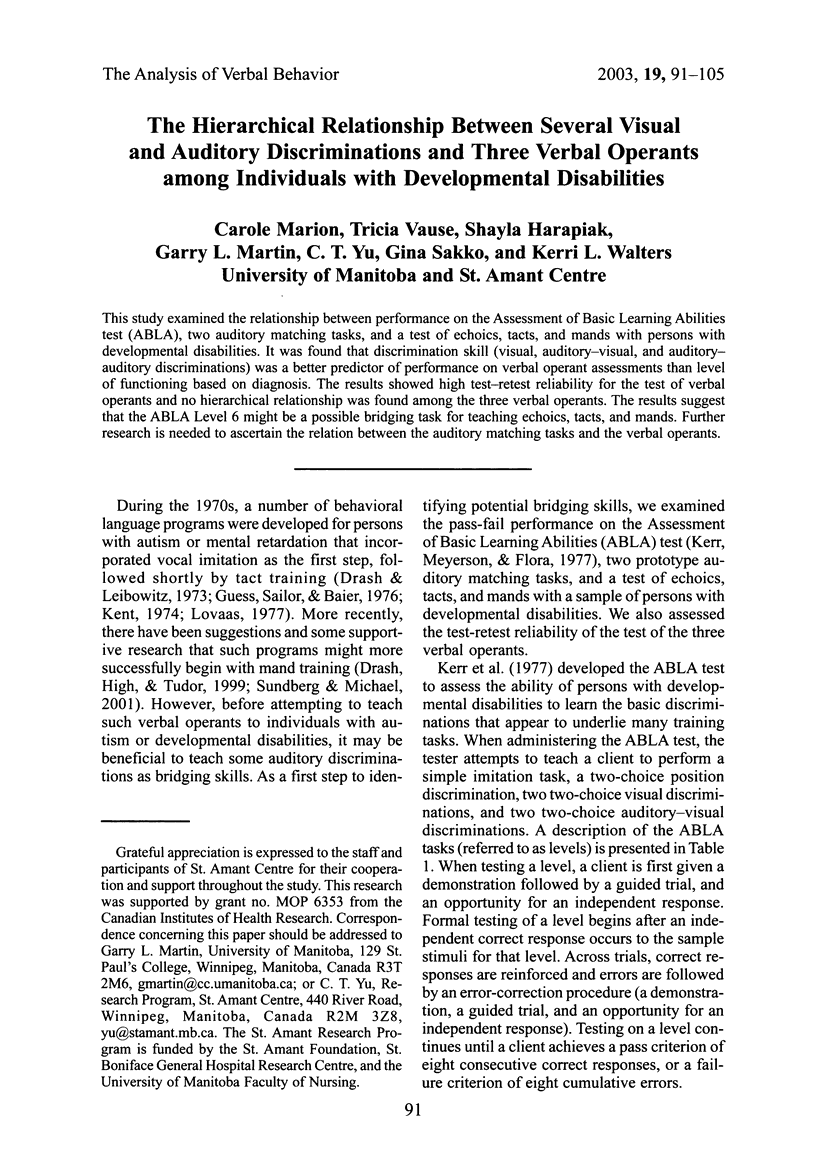
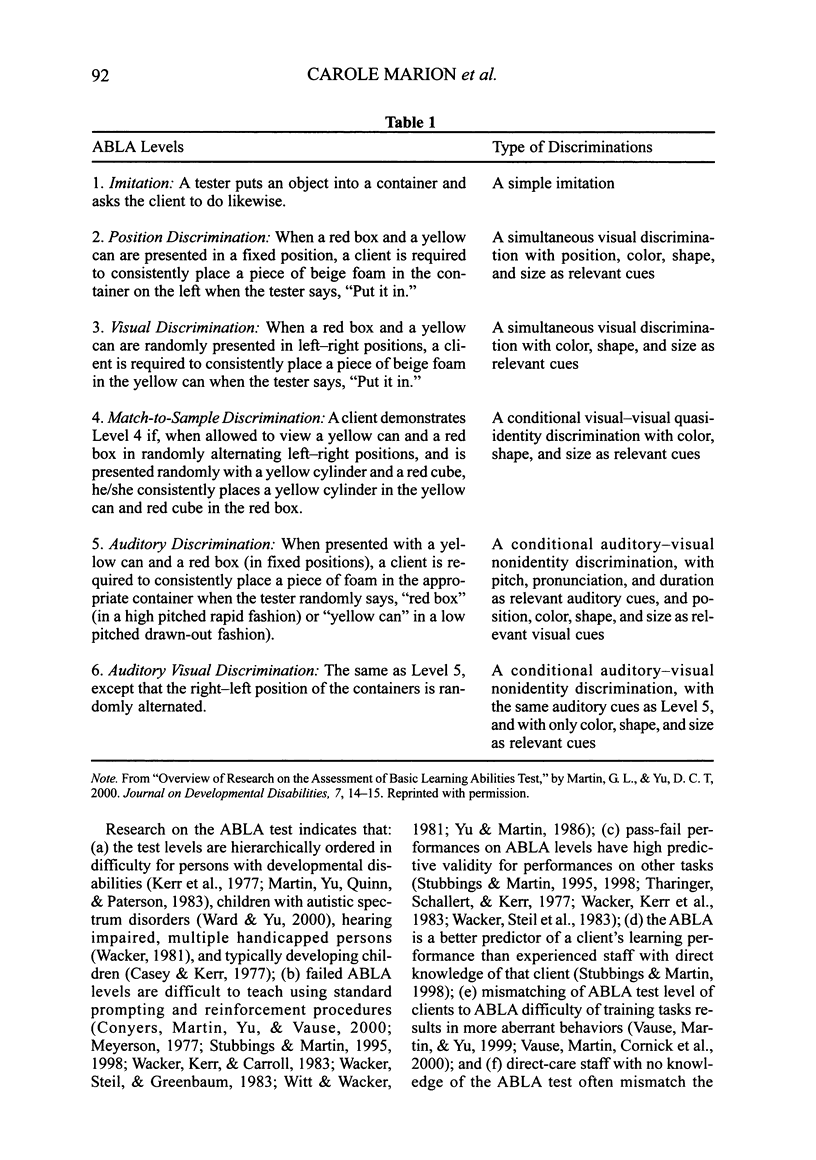
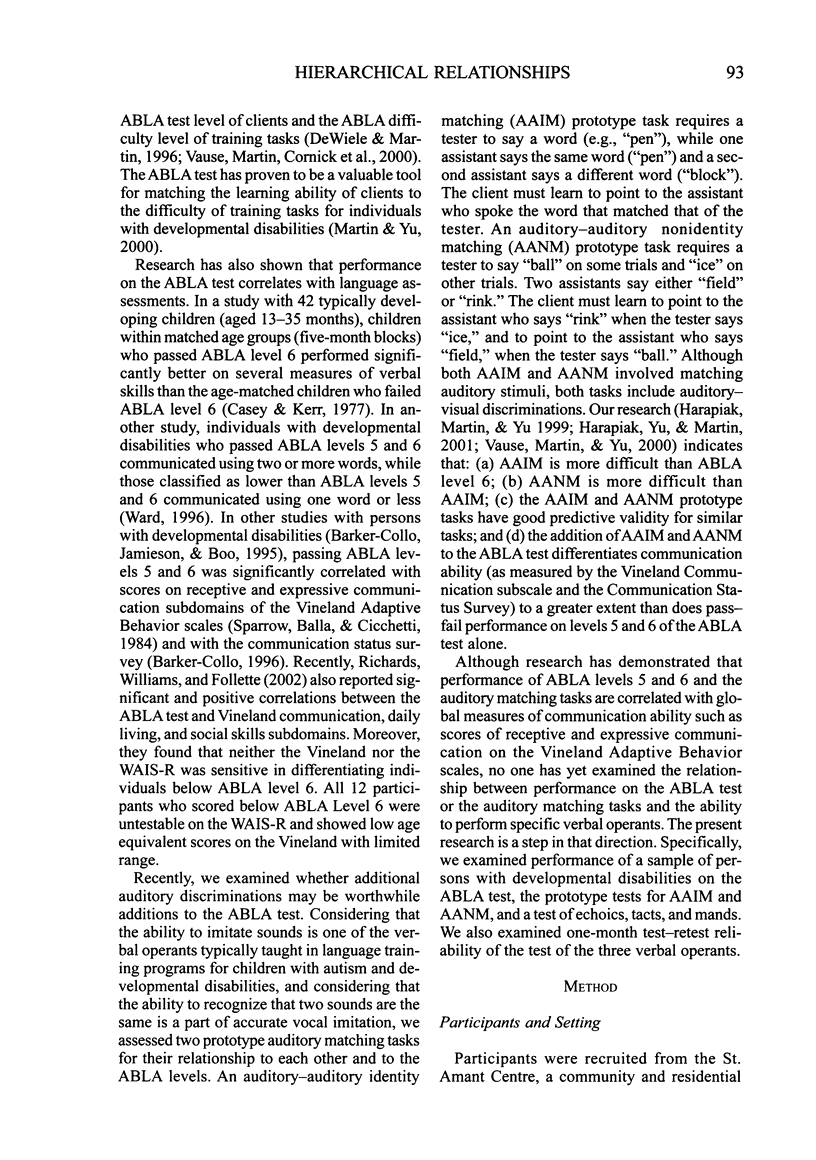
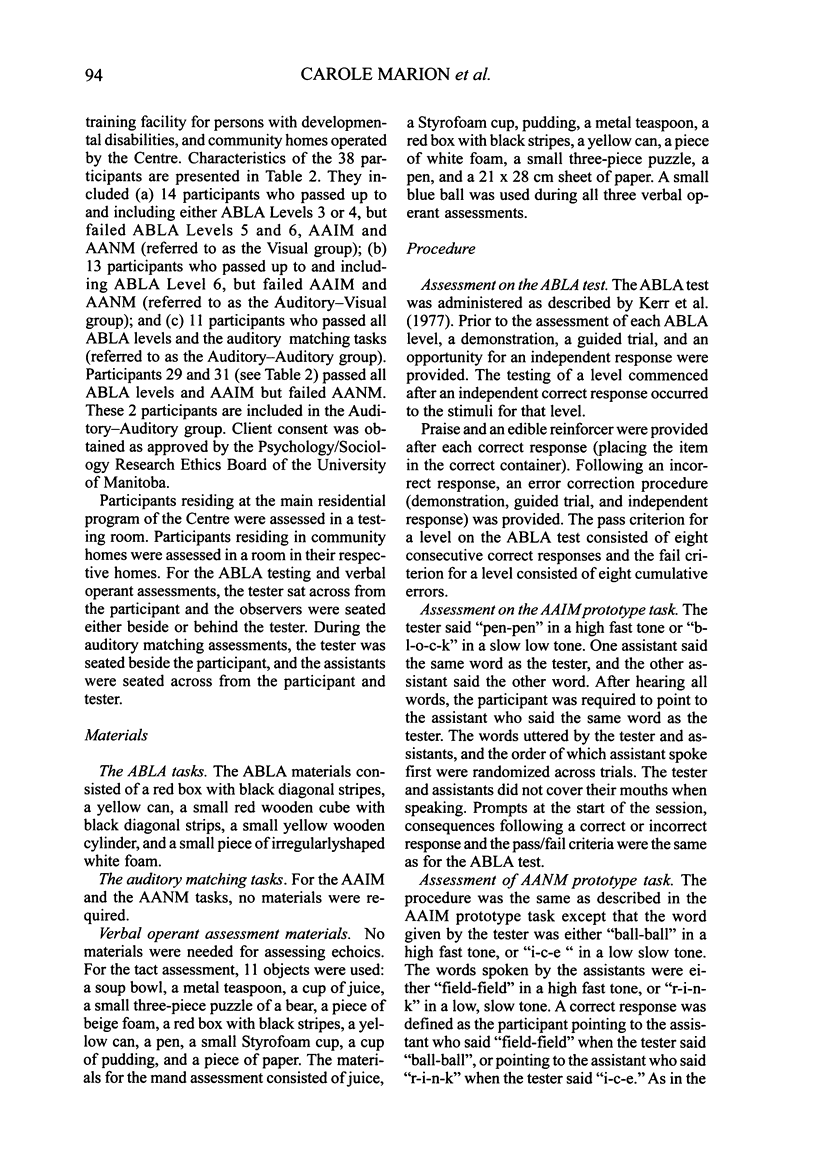


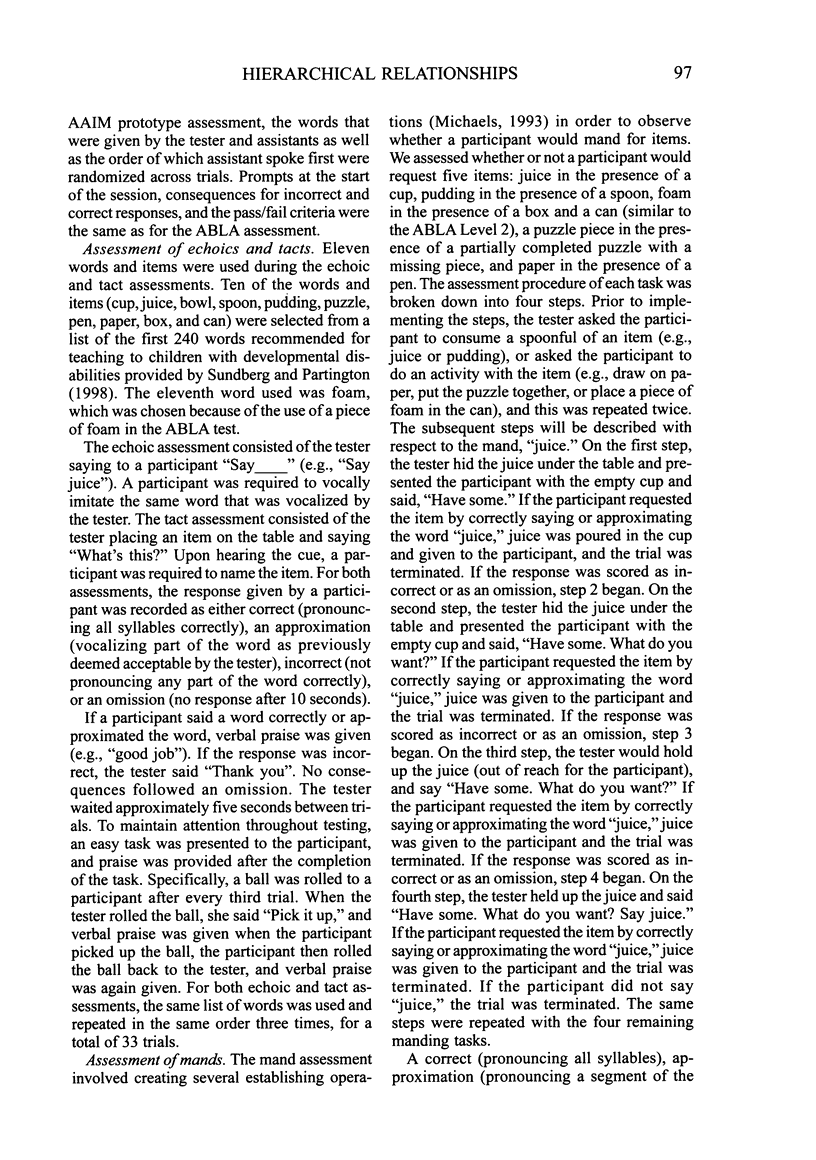

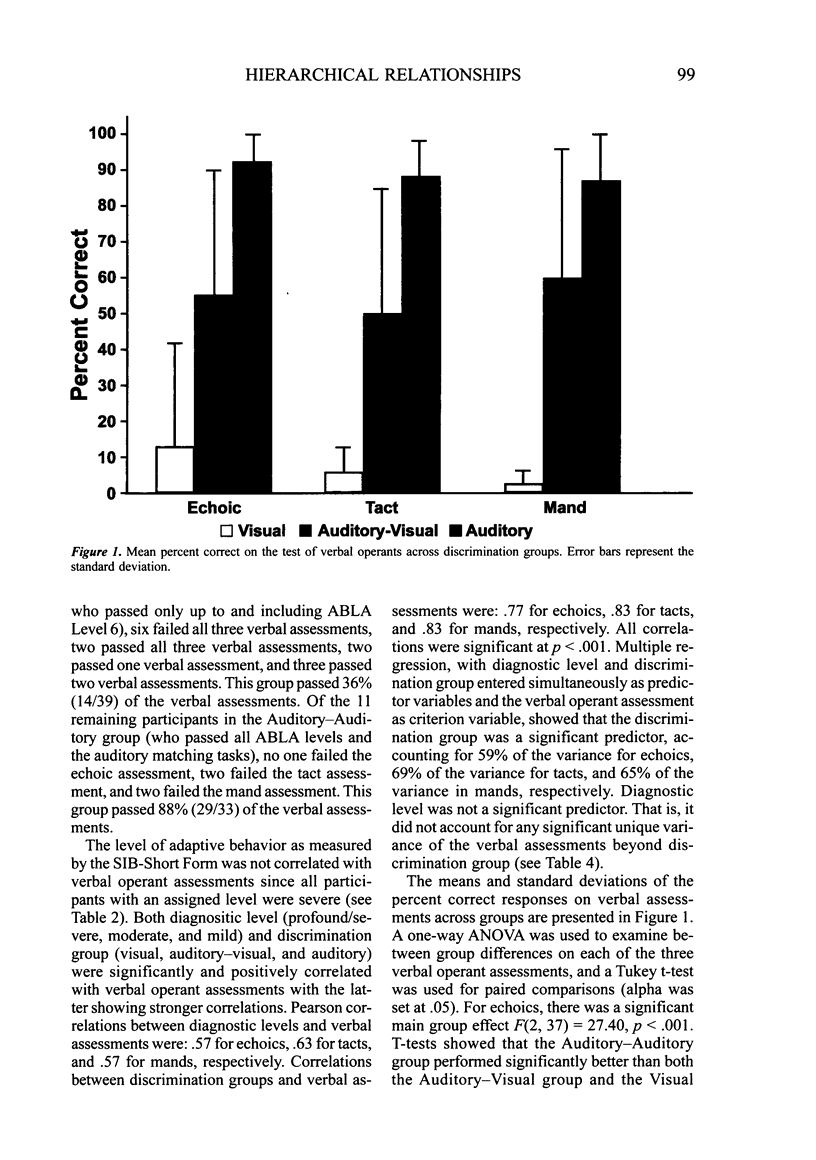
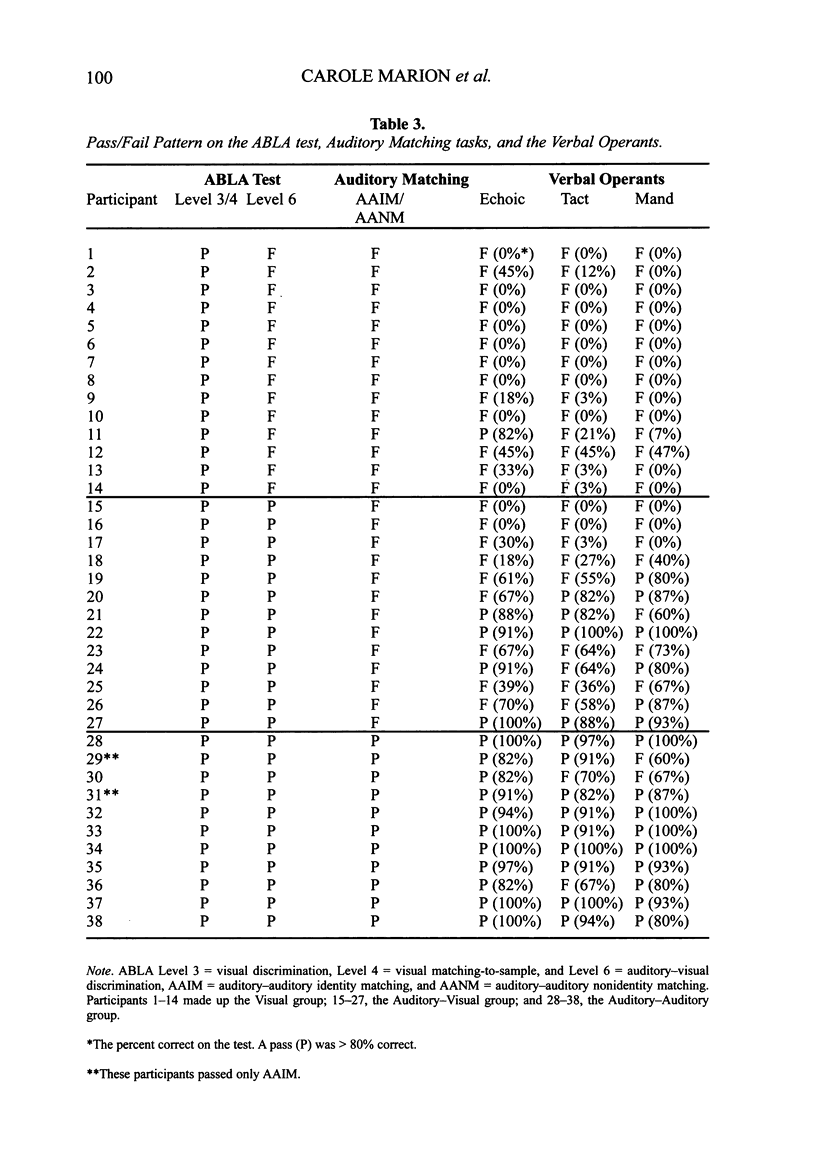
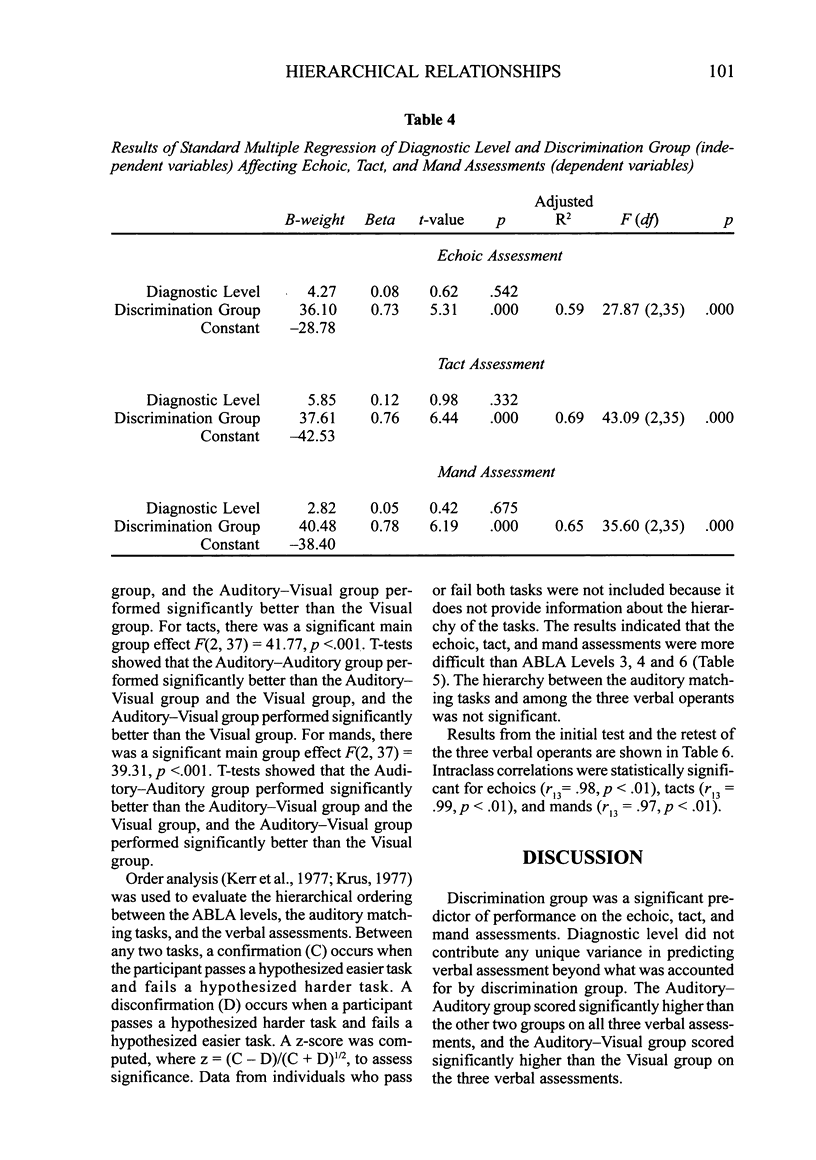
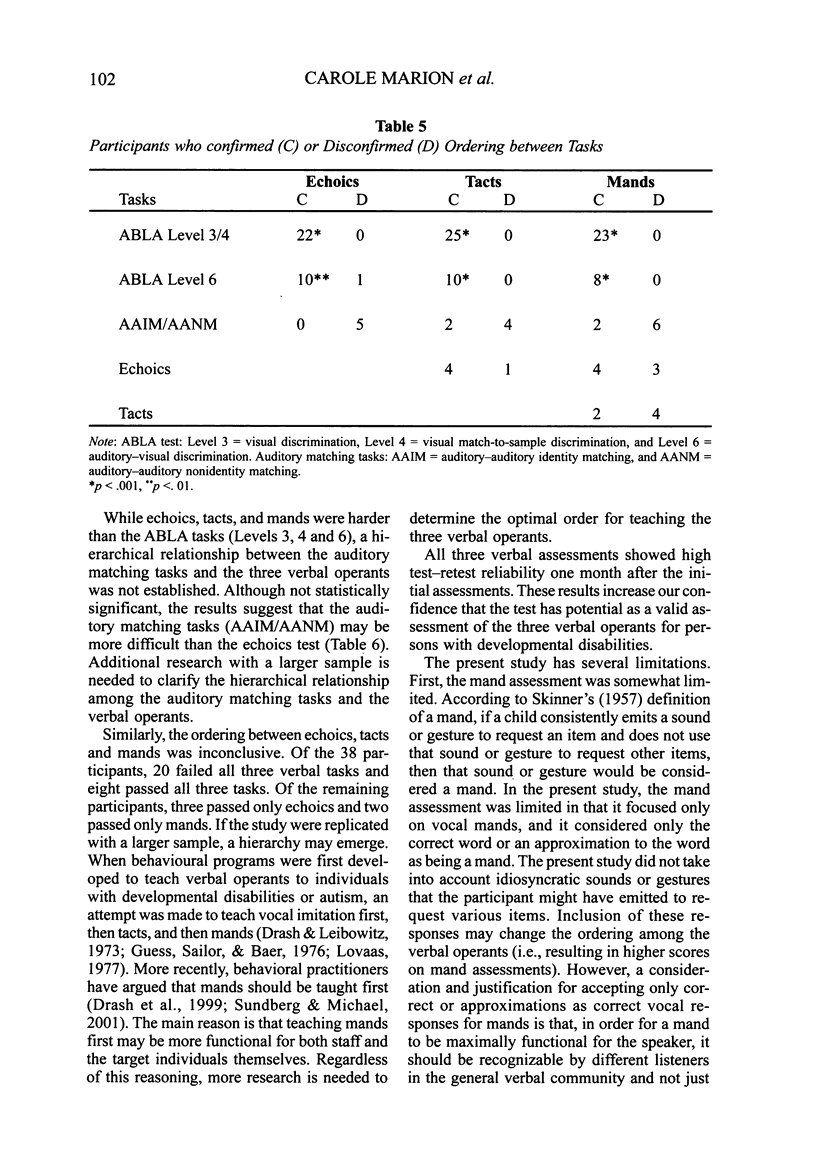
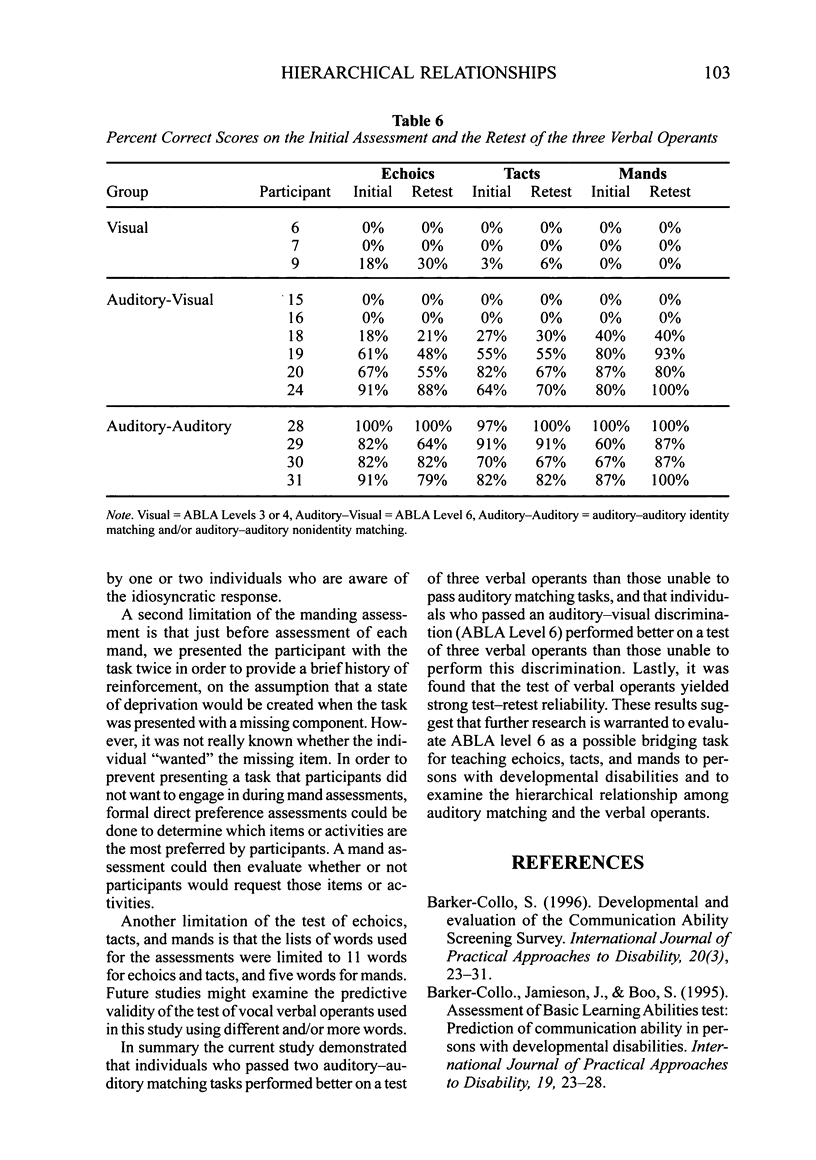
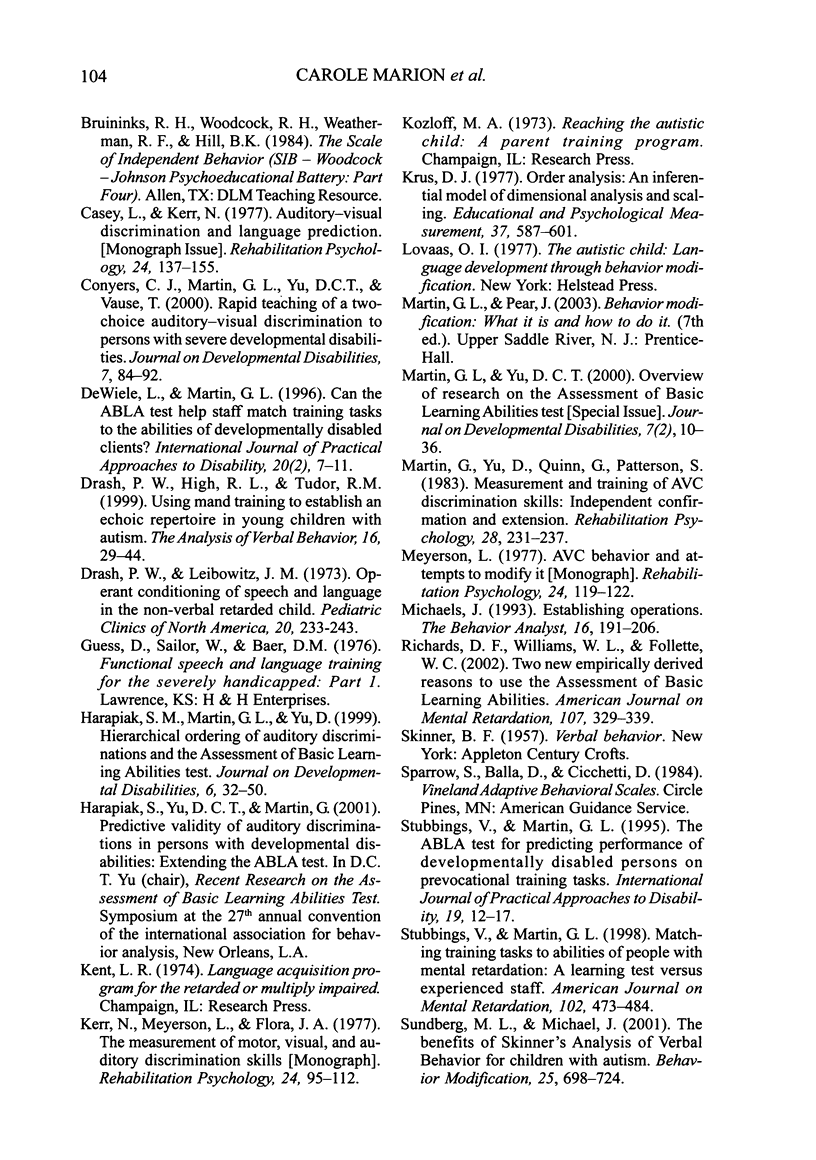
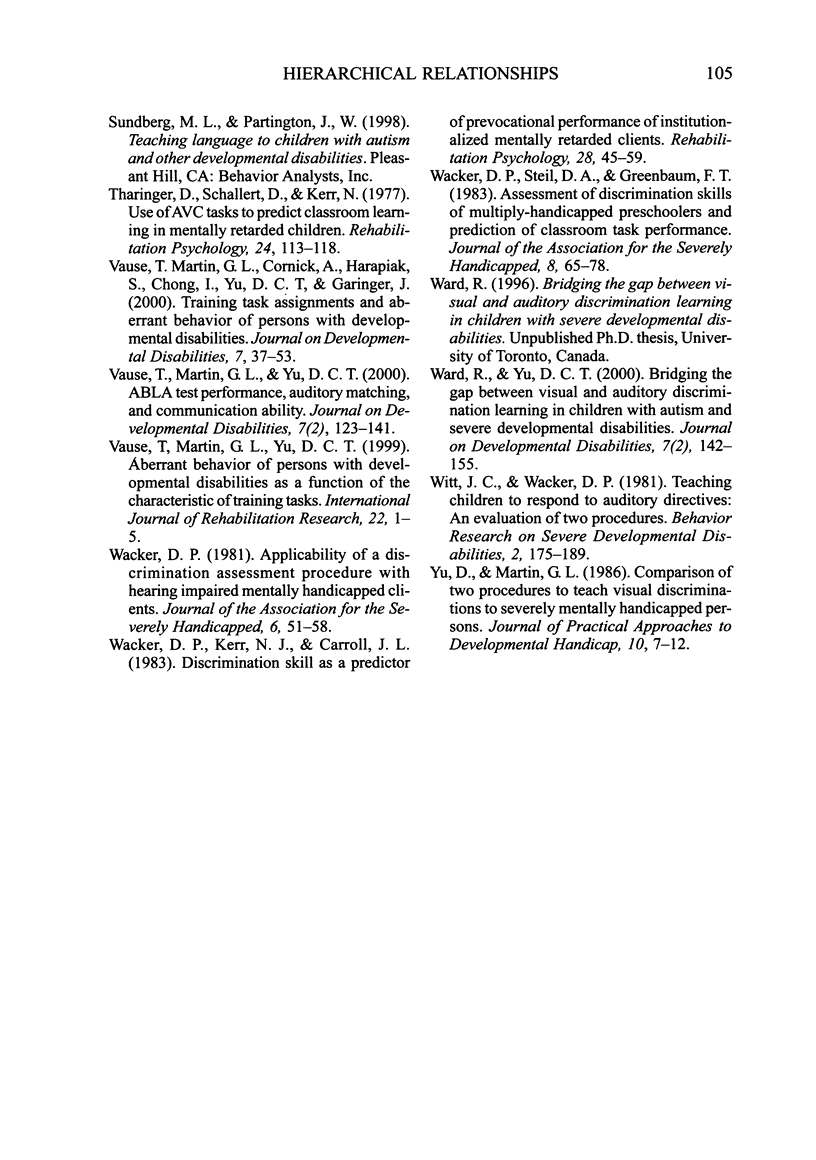
Images in this article
Selected References
These references are in PubMed. This may not be the complete list of references from this article.
- Drash P. W., Leibowitz M. Operant conditioning of speech and language in the nonverbal retarded child. Recent advances. Pediatr Clin North Am. 1973 Feb;20(1):233–243. doi: 10.1016/s0031-3955(16)32822-x. [DOI] [PubMed] [Google Scholar]
- Lysack J. T., Wyss U. P., Packer T. L., Mulholland S. J., Panchal V. Designing appropriate rehabilitation technology: a mobility device for women with ambulatory disabilities in India. Int J Rehabil Res. 1999 Mar;22(1):1–9. [PubMed] [Google Scholar]
- Michael J. Establishing operations. Behav Anal. 1993 Fall;16(2):191–206. doi: 10.1007/BF03392623. [DOI] [PMC free article] [PubMed] [Google Scholar]
- Richards David F., Williams W. Larry, Follette William C. Two new empirically derived reasons to use the assessment of basic learning abilities. Am J Ment Retard. 2002 Sep;107(5):329–339. doi: 10.1352/0895-8017(2002)107<0329:TNEDRT>2.0.CO;2. [DOI] [PubMed] [Google Scholar]
- Stubbings V., Martin G. L. Matching training tasks to abilities of people with mental retardation: a learning test versus experienced staff. Am J Ment Retard. 1998 Mar;102(5):473–484. doi: 10.1352/0895-8017(1998)102<0473:mtttao>2.0.co;2. [DOI] [PubMed] [Google Scholar]
- Sundberg M. L., Michael J. The benefits of Skinner's analysis of verbal behavior for children with autism. Behav Modif. 2001 Oct;25(5):698–724. doi: 10.1177/0145445501255003. [DOI] [PubMed] [Google Scholar]



